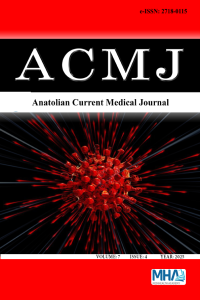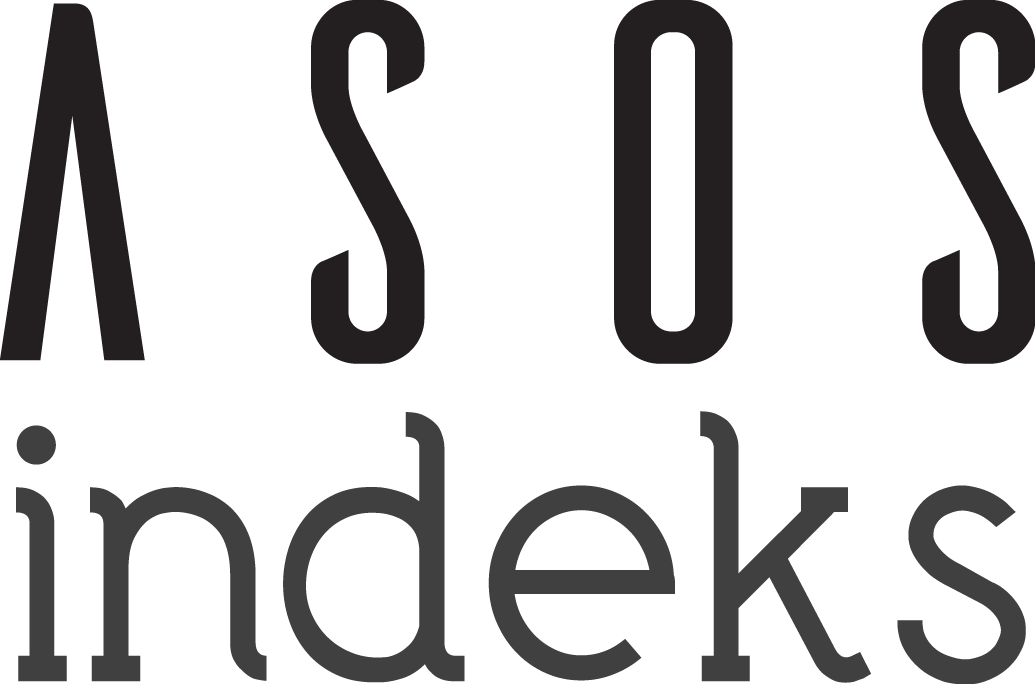Abstract
Aims: Celiac disease (CeD) is an immune-mediated enteropathy with multisystem involvement that is often underdiagnosed due to variable clinical manifestations. Identifying reliable, accessible, and noninvasive biomarkers is essential for timely diagnosis, particularly in resource-limited settings. This study aims to evaluate the diagnostic utility of inflammation and nutrition-related indices and scores calculated from routine laboratory tests in predicting CeD.
Methods: This retrospective cross-sectional study included 79 biopsy-confirmed celiac patients and 60 healthy controls. Demographic, hematological, and biochemical data were collected. The platelet-to-lymphocyte ratio (PLR), triglycerideglucose index (TyG), hemoglobin, albumin, lymphocyte, and platelet (HALP) score, and other inflammation-related indices were calculated via validated formulas. Logistic regression analysis was performed to identify independent predictors of CeD. Receiver operating characteristic (ROC) curves were used to assess diagnostic performance.
Results: Compared with controls, patients with CeD had significantly greater PLRs and lower TyG indices and HALP scores (p<0.05 for all). In logistic regression analysis, both the TyG index (OR: 0.248, 95% CI [0.090, 0.685]) and the HALP score (OR: 0.013, 95% CI [0.001, 0.108]) were identified as independent risk factors for CeD. ROC analysis demonstrated that the PLR (AUC: 0.641), TyG score (AUC: 0.643), and HALP score (AUC: 0.697) could distinguish celiac patients from healthy individuals. The optimal cut-off values were 138 for PLR, 8.21 for TyG, and 0.47 for HALP, with corresponding sensitivities and specificities ranging from 53% to 68%.
Conclusion: The TyG index and HALP score are independent predictors of CeD and, may serve as useful noninvasive markers for risk stratification.
References
- Bakhtiari S, Asri N, Jahdkaran M, Rezaei-Tavirani M, Jahani-Sherafat S, Rostami-Nejad M. The connection between fatty acids and inflammation in celiac disease; a deep exploring. Tissue Barriers. 2025;13(1):2342619. doi:10.1080/21688370.2024.2342619
- Buriánek F, Gege C, Marinković P. New developments in celiac disease treatments. Drug Discov Today. 2024;29(9):104113. doi:10.1016/j.drudis. 2024.104113
- Kurppa K, Mulder CJ, Stordal K, Kaukinen K. Celiac disease affects 1% of global population: who will manage all these patients? Gastroenterology. 2024;167(1):148-158. doi:10.1053/j.gastro.2023.12.026
- Kivelä L, Lindfors K, Lundin KEA, Størdal K. Review article: faecal biomarkers for assessing small intestinal damage in coeliac disease and environmental enteropathy. Aliment Pharmacol Ther. 2024;60(8):988-1004. doi:10.1111/apt.18234
- Gatti S, Rubio-Tapia A, Makharia G, Catassi C. Patient and community health global burden in a world with more celiac disease. Gastroenterology. 2024;167(1):23-33. doi:10.1053/j.gastro.2024.01.035
- Kowalski MK, Domżał-Magrowska D, Małecka-Wojciesko E. Celiac disease—narrative review on progress in celiac disease. Foods. 2025; 14(6):959. doi:10.3390/foods14060959
- Cheng FW, Handu D. Nutrition assessment, interventions, and monitoring for patients with celiac disease: an evidence analysis center scoping review. J Acad Nutr Diet. 2020;120(8):1381-1406. doi:10.1016/j.jand.2019.09.019
- Volta U, Rostami K, Auricchio R, Lundin KEA. Diagnosis of seronegative and ultrashort celiac disease. Gastroenterology. 2024;167(1):104-115. doi: 10.1053/j.gastro.2024.01.029
- Lebwohl B, Rubio-Tapia A. Epidemiology, presentation, and diagnosis of celiac disease. Gastroenterology. 2021;160(1):63-75. doi:10.1053/j.gastro.2020.06.098
- Fernández-Macías JC, Ochoa-Martínez AC, Varela-Silva JA, Pérez-Maldonado IN. Atherogenic index of plasma: novel predictive biomarker for cardiovascular illnesses. Arch Med Res. 2019;50(5):285-294. doi:10.1016/j.arcmed.2019.08.009
- Korkmaz ŞA, Kızgın S. Neutrophil/high-density lipoprotein cholesterol (HDL), monocyte/HDL and platelet/HDL ratios are increased in acute mania as markers of inflammation, even after controlling for confounding factors. Curr Med Res Opin. 2023;39(10):1383-1390. doi:10. 1080/03007995.2023.2260302
- Al-Nimer MSM, Mohammad TAM. Correlation of hematological indices and ratios derived from them with FIQR scores in fibromyalgia. Pakistan J Med Sci. 2018;34(5):1219-1224. doi:10.12669/pjms.345.15169
- Ciftel S, Ciftel S, Klisic A, Mercantepe F. New approaches based on inflammatory indexes in the evaluation of the neoplastic potential of colon polyps. Life. 2024;14(10):1-15. doi:10.3390/life14101259
- Arefhosseini S, Aghajani T, Tutunchi H, Ebrahimi-Mameghani M. Association of systemic inflammatory indices with anthropometric measures, metabolic factors, and liver function in non-alcoholic fatty liver disease. Sci Rep. 2024;14(1):1-10. doi:10.1038/s41598-024-63381-5
- Samavarchitehrani A, Mercantepe F, Behnoush AH, Klisic A. Exploring the TyG index and the homeostasis model assessment of insulin resistance as insulin resistance markers: implications for fibromyalgia management and understanding—a narrative review. Diagnostics. 2025; 15(4):494. doi:10.3390/diagnostics15040494
- Ballestero-Fernández C, Varela-Moreiras G, Úbeda N, Alonso-Aperte E. Nutritional status in Spanish adults with celiac disease following a long-term gluten-free diet is similar to non-celiac. Nutrients. 2021;13(5):1626. doi:10.3390/nu13051626
- Bakhtiari S, Ahmadi B, Asri N, et al. Unraveling the serum protein landscape in celiac disease: current evidence and future directions. Immunity, Inflamm Dis . 2025;13(5):1-13. doi:10.1002/iid3.70169
- Sutton KA, He M, Ma C, et al. Noninvasive markers of inflammation and protein loss augment diagnosis of pediatric celiac disease. Clin Transl Gastroenterol. 2024;15(5):1-6. doi:10.14309/ctg.0000000000000695
- Silvester JA, Elli L, Khosla C, Tye-Din JA. Past, present, and future of noninvasive tests to assess gluten exposure, celiac disease activity, and end-organ damage. Gastroenterology. 2024;167(1):159-171. doi:10.1053/j.gastro.2024.01.053
- Radkhah H, Zooravar D, Shateri-Amiri B, Saffar H, Najjari K HM. Predictive value of complete blood count (CBC)-derived indices-C-reactive-protein-albumin-lymphocyte index (CALLY), glucose-to-lymphocyte ratio (GLR), prognostic nutritional index (PNI), hemoglobin, albumin, lymphocyte, platelet (HALP), and controlling nu. Obes Surg. 2025;35(2):544-555. doi:10.1007/s11695-024-07643-1
- Gürbüzer N, Güler MC, Tör IH. Methamphetamine use disorder and inflammation: a case-control study. Psychiatry Investig. 2024;21(5):513-520. doi:10.30773/pi.2023.0199
- Gürbüzer N, Ozkaya AL. Inflammatory burden index (IBI) and hemoglobin, albumin, lymphocyte, and platelet (HALP) score in Alzheimer’s disease: a retrospective comparative study. Cureus. 2024; 16(9):e69148. doi:10.7759/cureus.69148
- George D MP. SPSS for Windows step by step: a simple guide and reference. 17.0 Update. 10th ed. Boston: Pearson; 2010.
- Cardo A, Churruca I, Lasa A, et al. Nutritional imbalances in adult celiac patients following a gluten-free diet. Nutrients. 2021;13(8):1-18. doi:10.3390/nu13082877
- Chen Y, Zhang Z, Fang Q, Jian H. Prognostic impact of platelet-to-lymphocyte ratio on diffuse large B-cell lymphoma: a meta-analysis. Cancer Cell Int. 2019;19(1):1-10. doi:10.1186/s12935-019-0962-3
- Khamisy-Farah R, Fund E, Raibman-Spector S, Adawi M. Inflammatory markers in the diagnosis of fibromyalgia. Isr Med Assoc J. 2021;23(12):801-804.
- Rajaram Jayakrishnan AK, Easwar S V, Thattil J, et al. Studying the relation between fibromyalgia severity and neutrophil-to-lymphocyte ratio, platelet-to-lymphocyte ratio, and mean platelet volume. Cureus. 2022;14(5):6-10. doi:10.7759/cureus.24847
- Abadie V, Han AS, Jabri B, Sollid LM. New insights on genes, gluten, and immunopathogenesis of celiac disease. Gastroenterology. 2024;167(1):4-22. doi:10.1053/j.gastro.2024.03.042
- Hoteit M, Chamas Z, Assaf S, et al. Nutritional status, nutrient imbalances, food-related behaviors and dietary supplements use among patients with celiac disease in Lebanon: a national cross-sectional study. F1000Research. 2022;11:725. doi:10.12688/f1000research.121859.1
- Singh P, Arora A, Strand TA, et al. Global prevalence of celiac disease: systematic review and meta-analysis. Clin Gastroenterol Hepatol. 2018; 16(6):823-836.e2. doi:10.1016/j.cgh.2017.06.037
Çölyak hastalığının tanısında inflamatuvar ve nütrisyonel biyobelirteçlerin rolünün değerlendirilmesi
Abstract
Arka Plan: Çölyak hastalığı (ÇH), çoklu sistemleri etkileyen ve klinik belirtilerin değişkenliği nedeniyle sıklıkla tanı konulamayan, immün aracılı bir enteropatidir. Güvenilir, erişilebilir ve invaziv olmayan biyobelirteçlerin tanımlanması, özellikle kaynakların kısıtlı olduğu ortamlarda zamanında tanı koymak için kritik öneme sahiptir. Amaç: Bu çalışmanın amacı, rutin laboratuvar testlerinden hesaplanan inflamasyon ve beslenme ile ilişkili indeks ve skorların çölyak hastalığını öngörmedeki tanısal değerini değerlendirmektir. Yöntemler: Bu kesitsel çalışmaya biyopsi ile doğrulanmış 79 çölyak hastası ve 60 sağlıklı kontrol dahil edilmiştir. Demografik, hematolojik ve biyokimyasal veriler toplanmıştır. Trombosit-lenfosit oranı (PLR), trigliserid-glukoz indeksi (TyG), hemoglobin, albümin, lenfosit ve trombosit (HALP) skoru ile diğer inflamasyonla ilişkili indeksler doğrulanmış formüllerle hesaplanmıştır. ÇH için bağımsız prediktörleri belirlemek amacıyla lojistik regresyon analizi yapılmıştır. Tanısal performansı değerlendirmek için ROC (alıcı işletim karakteristikleri) eğrileri kullanılmıştır. Bulgular: Kontrollerle karşılaştırıldığında, çölyak hastalarında PLR anlamlı derecede yüksek, TyG indeksi ve HALP skoru ise anlamlı derecede düşük bulunmuştur (tümünde p<0.05). Lojistik regresyon analizinde TyG indeksi (OR: 0.297; %95 GA: 0.112–0.791) ve HALP skoru (OR: 0.052; %95 GA: 0.009–0.283) çölyak hastalığı için bağımsız risk faktörleri olarak saptanmıştır. ROC analizi, PLR (EAA: 0.641), TyG skoru (EAA: 0.643) ve HALP skoru (EAA: 0.697) ile çölyak hastalarının sağlıklı bireylerden ayırt edilebileceğini göstermiştir. Optimal eşik değerler PLR için 138, TyG için 8.21 ve HALP için 0.47 olarak bulunmuş; bunlara karşılık gelen duyarlılık ve özgüllük değerleri %53 ile %68 arasında değişmiştir. Sonuç: TyG indeksi ve HALP skoru, çölyak hastalığı için bağımsız prediktörlerdir ve PLR ile birlikte risk sınıflandırması için faydalı invaziv olmayan belirteçler olarak hizmet edebilir.
References
- Bakhtiari S, Asri N, Jahdkaran M, Rezaei-Tavirani M, Jahani-Sherafat S, Rostami-Nejad M. The connection between fatty acids and inflammation in celiac disease; a deep exploring. Tissue Barriers. 2025;13(1):2342619. doi:10.1080/21688370.2024.2342619
- Buriánek F, Gege C, Marinković P. New developments in celiac disease treatments. Drug Discov Today. 2024;29(9):104113. doi:10.1016/j.drudis. 2024.104113
- Kurppa K, Mulder CJ, Stordal K, Kaukinen K. Celiac disease affects 1% of global population: who will manage all these patients? Gastroenterology. 2024;167(1):148-158. doi:10.1053/j.gastro.2023.12.026
- Kivelä L, Lindfors K, Lundin KEA, Størdal K. Review article: faecal biomarkers for assessing small intestinal damage in coeliac disease and environmental enteropathy. Aliment Pharmacol Ther. 2024;60(8):988-1004. doi:10.1111/apt.18234
- Gatti S, Rubio-Tapia A, Makharia G, Catassi C. Patient and community health global burden in a world with more celiac disease. Gastroenterology. 2024;167(1):23-33. doi:10.1053/j.gastro.2024.01.035
- Kowalski MK, Domżał-Magrowska D, Małecka-Wojciesko E. Celiac disease—narrative review on progress in celiac disease. Foods. 2025; 14(6):959. doi:10.3390/foods14060959
- Cheng FW, Handu D. Nutrition assessment, interventions, and monitoring for patients with celiac disease: an evidence analysis center scoping review. J Acad Nutr Diet. 2020;120(8):1381-1406. doi:10.1016/j.jand.2019.09.019
- Volta U, Rostami K, Auricchio R, Lundin KEA. Diagnosis of seronegative and ultrashort celiac disease. Gastroenterology. 2024;167(1):104-115. doi: 10.1053/j.gastro.2024.01.029
- Lebwohl B, Rubio-Tapia A. Epidemiology, presentation, and diagnosis of celiac disease. Gastroenterology. 2021;160(1):63-75. doi:10.1053/j.gastro.2020.06.098
- Fernández-Macías JC, Ochoa-Martínez AC, Varela-Silva JA, Pérez-Maldonado IN. Atherogenic index of plasma: novel predictive biomarker for cardiovascular illnesses. Arch Med Res. 2019;50(5):285-294. doi:10.1016/j.arcmed.2019.08.009
- Korkmaz ŞA, Kızgın S. Neutrophil/high-density lipoprotein cholesterol (HDL), monocyte/HDL and platelet/HDL ratios are increased in acute mania as markers of inflammation, even after controlling for confounding factors. Curr Med Res Opin. 2023;39(10):1383-1390. doi:10. 1080/03007995.2023.2260302
- Al-Nimer MSM, Mohammad TAM. Correlation of hematological indices and ratios derived from them with FIQR scores in fibromyalgia. Pakistan J Med Sci. 2018;34(5):1219-1224. doi:10.12669/pjms.345.15169
- Ciftel S, Ciftel S, Klisic A, Mercantepe F. New approaches based on inflammatory indexes in the evaluation of the neoplastic potential of colon polyps. Life. 2024;14(10):1-15. doi:10.3390/life14101259
- Arefhosseini S, Aghajani T, Tutunchi H, Ebrahimi-Mameghani M. Association of systemic inflammatory indices with anthropometric measures, metabolic factors, and liver function in non-alcoholic fatty liver disease. Sci Rep. 2024;14(1):1-10. doi:10.1038/s41598-024-63381-5
- Samavarchitehrani A, Mercantepe F, Behnoush AH, Klisic A. Exploring the TyG index and the homeostasis model assessment of insulin resistance as insulin resistance markers: implications for fibromyalgia management and understanding—a narrative review. Diagnostics. 2025; 15(4):494. doi:10.3390/diagnostics15040494
- Ballestero-Fernández C, Varela-Moreiras G, Úbeda N, Alonso-Aperte E. Nutritional status in Spanish adults with celiac disease following a long-term gluten-free diet is similar to non-celiac. Nutrients. 2021;13(5):1626. doi:10.3390/nu13051626
- Bakhtiari S, Ahmadi B, Asri N, et al. Unraveling the serum protein landscape in celiac disease: current evidence and future directions. Immunity, Inflamm Dis . 2025;13(5):1-13. doi:10.1002/iid3.70169
- Sutton KA, He M, Ma C, et al. Noninvasive markers of inflammation and protein loss augment diagnosis of pediatric celiac disease. Clin Transl Gastroenterol. 2024;15(5):1-6. doi:10.14309/ctg.0000000000000695
- Silvester JA, Elli L, Khosla C, Tye-Din JA. Past, present, and future of noninvasive tests to assess gluten exposure, celiac disease activity, and end-organ damage. Gastroenterology. 2024;167(1):159-171. doi:10.1053/j.gastro.2024.01.053
- Radkhah H, Zooravar D, Shateri-Amiri B, Saffar H, Najjari K HM. Predictive value of complete blood count (CBC)-derived indices-C-reactive-protein-albumin-lymphocyte index (CALLY), glucose-to-lymphocyte ratio (GLR), prognostic nutritional index (PNI), hemoglobin, albumin, lymphocyte, platelet (HALP), and controlling nu. Obes Surg. 2025;35(2):544-555. doi:10.1007/s11695-024-07643-1
- Gürbüzer N, Güler MC, Tör IH. Methamphetamine use disorder and inflammation: a case-control study. Psychiatry Investig. 2024;21(5):513-520. doi:10.30773/pi.2023.0199
- Gürbüzer N, Ozkaya AL. Inflammatory burden index (IBI) and hemoglobin, albumin, lymphocyte, and platelet (HALP) score in Alzheimer’s disease: a retrospective comparative study. Cureus. 2024; 16(9):e69148. doi:10.7759/cureus.69148
- George D MP. SPSS for Windows step by step: a simple guide and reference. 17.0 Update. 10th ed. Boston: Pearson; 2010.
- Cardo A, Churruca I, Lasa A, et al. Nutritional imbalances in adult celiac patients following a gluten-free diet. Nutrients. 2021;13(8):1-18. doi:10.3390/nu13082877
- Chen Y, Zhang Z, Fang Q, Jian H. Prognostic impact of platelet-to-lymphocyte ratio on diffuse large B-cell lymphoma: a meta-analysis. Cancer Cell Int. 2019;19(1):1-10. doi:10.1186/s12935-019-0962-3
- Khamisy-Farah R, Fund E, Raibman-Spector S, Adawi M. Inflammatory markers in the diagnosis of fibromyalgia. Isr Med Assoc J. 2021;23(12):801-804.
- Rajaram Jayakrishnan AK, Easwar S V, Thattil J, et al. Studying the relation between fibromyalgia severity and neutrophil-to-lymphocyte ratio, platelet-to-lymphocyte ratio, and mean platelet volume. Cureus. 2022;14(5):6-10. doi:10.7759/cureus.24847
- Abadie V, Han AS, Jabri B, Sollid LM. New insights on genes, gluten, and immunopathogenesis of celiac disease. Gastroenterology. 2024;167(1):4-22. doi:10.1053/j.gastro.2024.03.042
- Hoteit M, Chamas Z, Assaf S, et al. Nutritional status, nutrient imbalances, food-related behaviors and dietary supplements use among patients with celiac disease in Lebanon: a national cross-sectional study. F1000Research. 2022;11:725. doi:10.12688/f1000research.121859.1
- Singh P, Arora A, Strand TA, et al. Global prevalence of celiac disease: systematic review and meta-analysis. Clin Gastroenterol Hepatol. 2018; 16(6):823-836.e2. doi:10.1016/j.cgh.2017.06.037
Details
| Primary Language | English |
|---|---|
| Subjects | Endocrinology |
| Journal Section | Research Articles |
| Authors | |
| Publication Date | July 28, 2025 |
| Submission Date | July 1, 2025 |
| Acceptance Date | July 18, 2025 |
| Published in Issue | Year 2025 Volume: 7 Issue: 4 |
TR DİZİN ULAKBİM and International Indexes (1b)
Interuniversity Board (UAK) Equivalency: Article published in Ulakbim TR Index journal [10 POINTS], and Article published in other (excuding 1a, b, c) international indexed journal (1d) [5 POINTS]
Note: Our journal is not WOS indexed and therefore is not classified as Q.
You can download Council of Higher Education (CoHG) [Yüksek Öğretim Kurumu (YÖK)] Criteria) decisions about predatory/questionable journals and the author's clarification text and journal charge policy from your browser. https://dergipark.org.tr/tr/journal/3449/file/4924/show
Journal Indexes and Platforms:
TR Dizin ULAKBİM, Google Scholar, Crossref, Worldcat (OCLC), DRJI, EuroPub, OpenAIRE, Turkiye Citation Index, Turk Medline, ROAD, ICI World of Journal's, Index Copernicus, ASOS Index, General Impact Factor, Scilit.The indexes of the journal's are;
The platforms of the journal's are;
|
The indexes/platforms of the journal are;
TR Dizin Ulakbim, Crossref (DOI), Google Scholar, EuroPub, Directory of Research Journal İndexing (DRJI), Worldcat (OCLC), OpenAIRE, ASOS Index, ROAD, Turkiye Citation Index, ICI World of Journal's, Index Copernicus, Turk Medline, General Impact Factor, Scilit
Journal articles are evaluated as "Double-Blind Peer Review"
All articles published in this journal are licensed under a Creative Commons Attribution 4.0 International License (CC BY 4.0)














